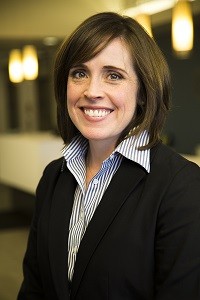Thought Leaders
 Dr. Allegra da Silva
Dr. Allegra da Silva
Supervising Engineer, Americas Region
Dr. da Silva has more than 11 years of experience in drinking water, wastewater and water reuse, as well as more than 17 years of experience working on international collaborations. Dr. da Silva specializes in water reuse, including treatment technology evaluation, policy framework development, feasibility studies, and research design and execution. She has been involved as a project engineer on water and wastewater facilities ranging in size up to 235 mgd and has helped to manage as much as $30M per year in studies. Dr. da Silva loves working at the interface of engineering and policy, and she served as a technical editor for the 2012 U.S. Environmental Protection Agency (EPA) Guidelines for Water Reuse. As a follow-up to that work, she and Dr. Bell managed and provided major technical input into the potable reuse supplement to the Guidelines, which is anticipated for publication in late 2016 following final EPA review.
Dr. da Silva is also actively involved in WateReuse Colorado (WRCO) and in the regulatory process in Colorado to potentially allow new types of water reuse applications to occur in the state, such as toilet flushing and irrigation of edible crops. She serves on several committees as part of the American Water Works Association (AWWA) and Water Environment Federation (WEF). She is on the Issue Area Team (IAT) for the Water Environment and Reuse Foundation (WE&RF) and serves in project advisory roles for the foundation. Dr. da Silva holds a PhD and MS in Environmental Engineering from Yale University and a BS in Chemical Engineering from the Rensselaer Polytechnic Institute.
Email Now LinkedIn
Associations, Awards and Certificates:
- AAAS Science and Technology Policy Fellowship in Diplomacy, 2009-2011
- US National Science Foundation Graduate Fellowship, 2004-2007
- Professional Engineer (CT, CO)
Latest Insight from Allegra:
Direct potable reuse and regulation in the U.S.
Potable Reuse: The Regulatory Context for Florida and the U.S (please go to page 48 to begin reading the article)
